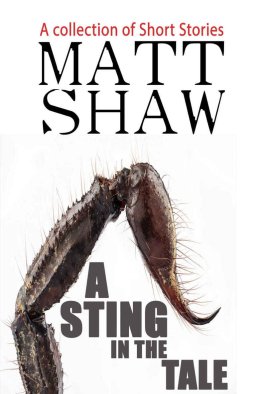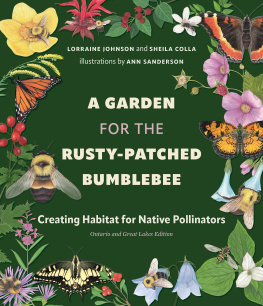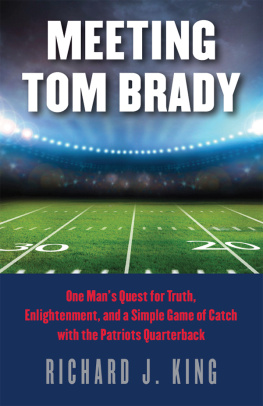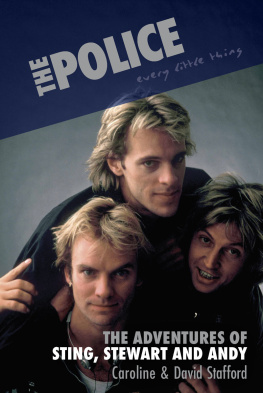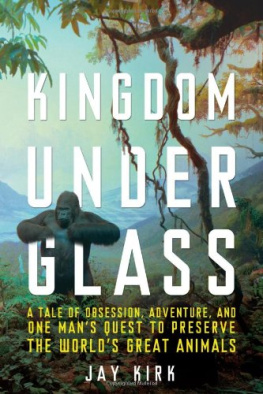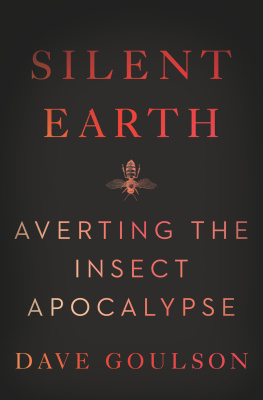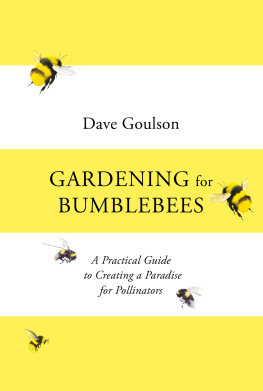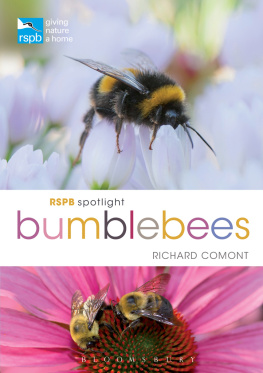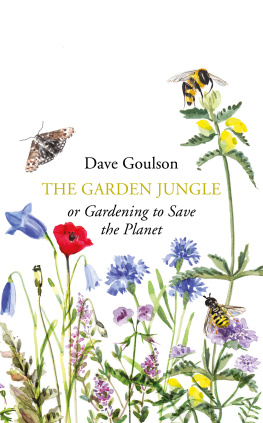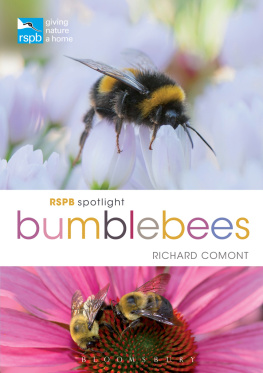Goulson - A Sting in the Tale: My Adventures with Bumblebees
Here you can read online Goulson - A Sting in the Tale: My Adventures with Bumblebees full text of the book (entire story) in english for free. Download pdf and epub, get meaning, cover and reviews about this ebook. year: 2016, publisher: Jonathan Cape;Vintage, genre: Non-fiction. Description of the work, (preface) as well as reviews are available. Best literature library LitArk.com created for fans of good reading and offers a wide selection of genres:
Romance novel
Science fiction
Adventure
Detective
Science
History
Home and family
Prose
Art
Politics
Computer
Non-fiction
Religion
Business
Children
Humor
Choose a favorite category and find really read worthwhile books. Enjoy immersion in the world of imagination, feel the emotions of the characters or learn something new for yourself, make an fascinating discovery.
- Book:A Sting in the Tale: My Adventures with Bumblebees
- Author:
- Publisher:Jonathan Cape;Vintage
- Genre:
- Year:2016
- Rating:3 / 5
- Favourites:Add to favourites
- Your mark:
- 60
- 1
- 2
- 3
- 4
- 5
A Sting in the Tale: My Adventures with Bumblebees: summary, description and annotation
We offer to read an annotation, description, summary or preface (depends on what the author of the book "A Sting in the Tale: My Adventures with Bumblebees" wrote himself). If you haven't found the necessary information about the book — write in the comments, we will try to find it.
Goulson: author's other books
Who wrote A Sting in the Tale: My Adventures with Bumblebees? Find out the surname, the name of the author of the book and a list of all author's works by series.
A Sting in the Tale: My Adventures with Bumblebees — read online for free the complete book (whole text) full work
Below is the text of the book, divided by pages. System saving the place of the last page read, allows you to conveniently read the book "A Sting in the Tale: My Adventures with Bumblebees" online for free, without having to search again every time where you left off. Put a bookmark, and you can go to the page where you finished reading at any time.
Font size:
Interval:
Bookmark:
Contents
Dave Goulson has always been obsessed with wildlife, from his childhood menagerie of exotic pets and dabbling in experimental taxidermy to his groundbreaking research into the mysterious ways of the bumblebee and his mission to protect our rarest bees.
Once commonly found in the marshes of Kent, the short-haired bumblebee now only exists in the wilds of New Zealand, the descendants of a few queen bees shipped over in the nineteenth century. Dave Goulsons passionate drive to reintroduce it to its native land is one of the highlights of a book that includes exclusive research into these curious creatures, historys relationship with the bumblebee and advice on how to protect it for all time.
One of the UKs most respected conservationists and the founder of the Bumblebee Conservation Trust, Goulson combines Gerald Durrell-esque tales of a childs growing passion for nature with a deep insight into the crucial importance of the bumblebee. He details the minutiae of life in their nests, sharing fascinating research into the effects intensive farming has had on our bee populations and on the potential dangers if we are to continue down this path.
Dave Goulson studied biology at Oxford University and is now Professor of Biological Sciences at the University of Sussex. He has published over 190 scientific articles on bees, butterflies and other insects. He founded the Bumblebee Conservation Trust in 2006, whose groundbreaking conservation work won the Heritage Lottery Award for best Environmental Project. He was made Social Innovator of the Year by the Biology and Biotechnology Research Council in 2010.
For Seth, my youngest son.
May there always be a flowery meadow
and the sight and sound of buzzing bees for him to enjoy.
IN THE
TALE

JONATHAN CAPE
LONDON
The last word in ignorance is the man who says of an animal or plant, What good is it? If the biota, in the course of aeons, has built something we like but do not understand, then who but a fool would discard seemingly useless parts? To keep every cog and wheel is the first precaution of intelligent tinkering.
Aldo Leopold
My interest in bumblebees and other insects dates back to the age of seven, when my family and I moved from a small semi-detached house on the edge of Birminghams urban sprawl to a little village called Edgmond in Shropshire. My father had been brought up close by in the market town of Newport and, being a schoolteacher, he was keen that his two sons should get a good education. Newport had, and still has, a fine grammar school, the school which my father had attended and to which he hoped my brother and I would go, provided we could pass the entrance exam.
At seven I didnt much care about school, but I loved our new house. In hindsight it was rather ugly, with a rash of stone cladding and a hideous flat-roofed extension, but small boys dont worry about such things. The house was detached, and it had a much bigger garden than I was used to. There were large flower borders, apple and damson trees, a pond, two ancient wooden sheds full of cobwebs and vast spiders which gave me the willies, and enough room for my father to grow a fine patch of vegetables. Better still, the house was opposite open countryside. I had only to cross the village high street and jump a stone wall, and I was in a huge field, with a magnificent horse chestnut tree to climb. A grumpy dappled grey horse often stood in the trees shade on hot summers days, twitching its tail at the flies, and was prone to biting and kicking. In spring, the tree would teem with bumblebees visiting its pyramids of cream and pink flowers. The supply of bees meant that the flowers turned into plentiful conkers in late summer with which my friends and I would bomb passersby while hidden in the dense green canopy of the treetop.
My father wasnt too interested in flowers; he allowed me to plant what I liked, so I put in lavender, buddleia and catmint to attract bumblebees and butterflies. I trained a honeysuckle up one of the old sheds to feed moths, and planted a male pussy willow to provide the bees with early spring food. I built a large rockery out of old bricks which I scavenged from a dilapidated farm building across the fields, carrying them home in a knapsack. I left spaces at the bottom for the bumblebees to nest in, and planted the top with birds-foot trefoil to provide flowers for bees and tasty leaves for caterpillars of the common blue butterfly. I dug a bigger pond, and stocked it with newts, sticklebacks and all manner of other beasts from the local canal.
I have no idea where this all came from. My father was a history teacher who, to this day, can recite the chronology of English monarchs since William the Conqueror, with dates, and discern the age of a building from the shape of its windows or finials. Give him a bumblebee, however, and he hasnt a clue (although I have tried to educate him). My mother was a sports teacher, great with a rounders bat or a tennis racquet and fiercely competitive, but with no interest whatsoever in nature. She was not at all keen on creepy-crawlies of any description, and absolutely terrified of spiders. So I had to teach myself, using a range of identification books and natural history guides that my parents happily supplied me with; my father loved books of any sort.
The only adult whom I can recall actively encouraging my interests was a primary school teacher, the formidable Miss Scott. She was short and stocky, with thick brown curly hair and, having a short fuse, was prone to barking commands and reprimands. My classmates and I were initially terrified our previous teachers had been the sweet, gentle types that one imagines primary schoolteachers to be. But before long we realised that there was a merry glint in her eye, and that the stern front she presented was just that: a front. What is more, she loved to take us out looking for beasts and bugs; she showed us how to identify trees from the leaves, and how to place pitfall traps to catch beetles. She was particularly keen on pond-dipping. In my memory it seems that we went pond-dipping in the local canal every day (and it was always sunny). Our classroom soon filled with jam jars containing tadpoles, pond-skaters, ferocious dragonfly larvae, great diving beetles, millipedes, spiders and much else besides. The dragonfly larva was my particular favourite this ugly, dumpy brown creature would lurk motionless at the bottom of the jar, waiting to be fed. Each day we would drop in a tadpole or a worm and watch, ghoulishly, as the dragonfly larvas face unfolded into telescopic pincers with which it snatched and devoured its unsuspecting prey.
By the following spring, my efforts to encourage wildlife in the garden were really beginning to pay off. I noticed huge queen bumblebees, fresh from hibernation, feeding on the pussy willow and lungwort. These bees had been asleep for seven months or so, since the previous July, so the spring feast I had grown for them was particularly welcome. Once satiated, the queens would fly low over the ground, searching for a suitable hole in which to nest. I noticed a white-tailed bumblebee queen investigating the space under one of the garden sheds, and she must have liked it, for weeks later her smaller workers appeared, flying out to gather food and coming back, half an hour later, with enormous balls of bright yellow pollen on their legs. I sat and watched them for hours, and noticed the nest traffic becoming busier and busier as the season went on and the number of workers rapidly grew. No bees ever showed any interest in nesting in my purpose-made bumblebee nest chambers beneath the rockery.
Next pageFont size:
Interval:
Bookmark:
Similar books «A Sting in the Tale: My Adventures with Bumblebees»
Look at similar books to A Sting in the Tale: My Adventures with Bumblebees. We have selected literature similar in name and meaning in the hope of providing readers with more options to find new, interesting, not yet read works.
Discussion, reviews of the book A Sting in the Tale: My Adventures with Bumblebees and just readers' own opinions. Leave your comments, write what you think about the work, its meaning or the main characters. Specify what exactly you liked and what you didn't like, and why you think so.


